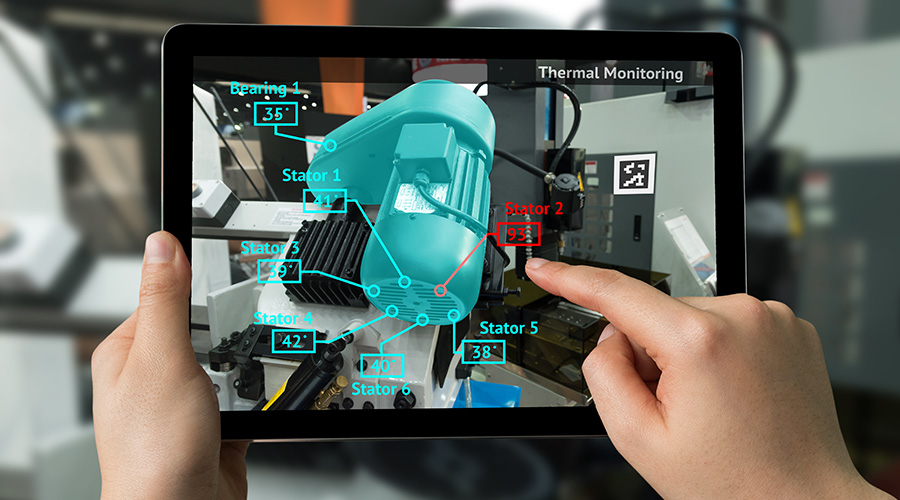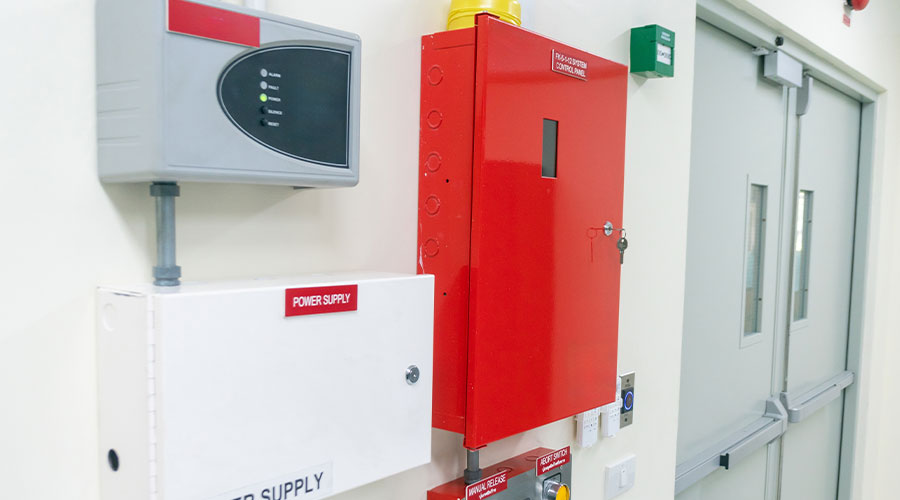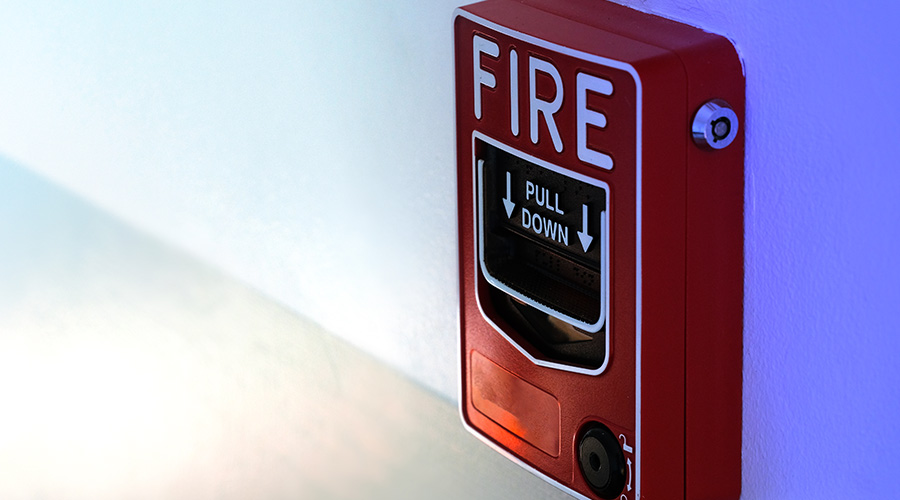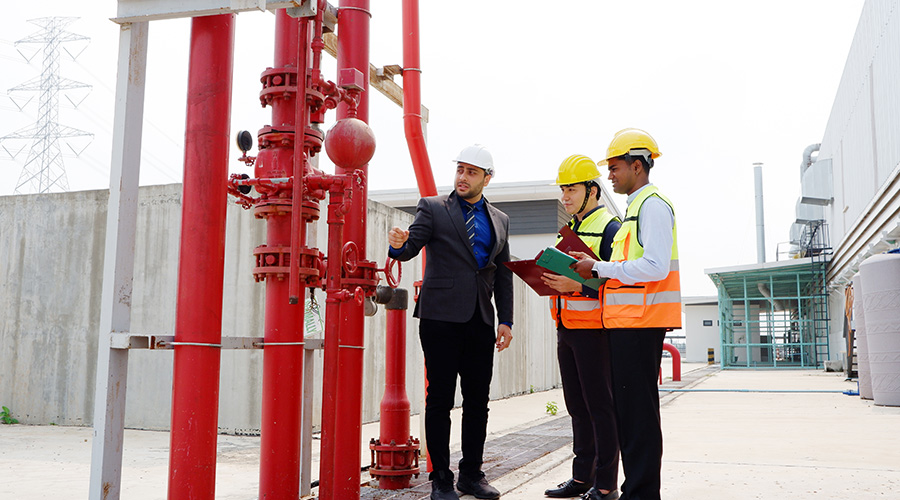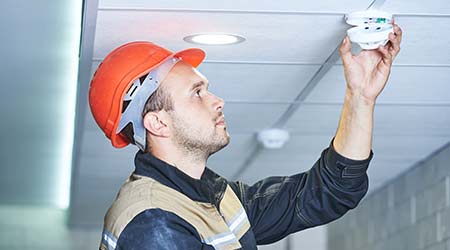 The challenge for maintenance and engineering managers is to understand the gamut of issues related to damper installation and performance, including inspection, testing, and maintenance.
The challenge for maintenance and engineering managers is to understand the gamut of issues related to damper installation and performance, including inspection, testing, and maintenance. How To Properly Inspect and Test Fire Dampers
Managers should make sure Technicians visually inspect fire dampers in accordance with the testing schedule outlined by NFPA 80.
Technicians should visually inspect fire dampers in accordance with the testing schedule outlined by NFPA 80 unless the facility or local authority having jurisdiction (AHJ) has a policy that requires more frequent activity. Unlike testing, it is not necessary to inform occupants, owners, or other agencies when executing a visual inspection unless the situation requires further testing or repairs.
To perform a successful visual inspection, technicians need to ensure the line of sight is unobstructed. Because the damper is designed to close automatically, they must make sure it is not blocked and that any object that will affect the operation of the frame is not penetrating it. They also need to confirm that the fusible link has not been painted or damaged because this will prevent the damper from engaging in the event of an emergency.
Visual inspections of smoke dampers as outlined in NFPA 105 are similar to the process for fire dampers. One difference is that a smoke damper generally has an associated smoke or duct detector for activation. NFPA 72 requires a semi-annual visual inspection of the spot-type smoke detector in addition to the visual inspection requirements outlined in NFPA 105.
Technicians should visually inspect combination fire/smoke dampers based on the aforementioned requirements for fire dampers and smoke dampers.
Testing, testing
Technicians need to test and inspect fire dampers one year after installation and every four years after that, except in hospitals, in which the frequency is every six years, according to NFPA 80. To begin the process, managers need to confirm that the technician performing the test is wearing the appropriate personal protective equipment (PPE), that all safety requirements have been provided, and that the appropriate parties have been notified that testing will occur. These parties could include the property manager, the fire alarm monitoring station or sub-contractor, the local AHJ, department directors, and building occupants that might be affected by the testing.
If a fusible link is present, the inspector should remove it prior to beginning testing. When dynamic dampers are present, testing in normal HVAC operation with air flow is the only way to prove its operation in the case of an actual event. Static dampers do not require airflow during operational testing. Successful operation during the test will verify there is no interference due to rust or damaged blades.
NFPA 105 provides requirements for smoke damper testing. It requires testing and inspection of the damper one year after installation and every four years after that, except in hospitals, in which the frequency is every six years.
As indicated above, managers need to verify that the appropriate safety measures and PPE are in use and that required parties have been notified before testing begins. As with testing dynamic fire dampers, testing a smoke damper should be done under normal airflow conditions to confirm no impediment to operation exists due to rust or damaged blades.
Besides the damper test required by NFPA 105, NFPA 72 requires an annual test of the spot-type smoke detector or duct detector that activates the smoke damper. It often is beneficial to perform these two tests at the same time, with both tests being documented in the proper NFPA 72/NFPA 105 documentation.
Get it in writing
NFPA 80 and NFPA 105 require that workers document all inspections and testing. It is important to be specific in documenting damper testing for AHJs, as well as for regulatory bodies that might review the testing for compliance.
Codes require the following information be logged after damper testing: location of the damper; date of inspection; inspector name; deficiencies discovered with repair information; and additional notes. While not required, it might be beneficial to the facility to have plans indicating the locations of dampers, the types of dampers, and other relevant information, such as an associated duct or spot-type smoke detector identifier for the fire alarm system.
By becoming familiar with the applicable codes and requirements, facility staff will be able to answer questions and ensure building safety. This information also prepares them to work effectively with the AHJ. Whether the design responsibility is in house or provided by a subconsultant, managers who understand fire and smoke dampers will be able enhance the performance of the systems and their organizations.
Mark Chrisman is an associate vice president, director of code consulting, and healthcare practice co-director with Henderson Engineers, www.hendersonengineers.com. He works primarily in critical spaces with life-safety systems and provides code and life-safety consulting, as well as fire-modeling, fire-suppression, and fire-alarm design services for health care, clinical, and office buildings nationwide.
Related Topics:











